The History and Popular Music of the ’60s class learned about a pair of classic Nina Simone albums, Pastel Blues (1965) and Wild is the Wind (1966). Here are their reactions.
Gibson McCoy:
I made a timeline of Nina Simone’s music and her life. The majority of my timeline is spent in 1964 during the fight for civil rights and the music that Simone produced at the time.
-Born on February 21, 1933
Born in North Carolina sixth child out of eight. Started playing piano at 3 years old. Real name Eunice Kathleen Waymon.
– Started performing in a church at the age of 12
In her first performance, Simone’s parents were told to sit in the back but she would not perform if they were not in the front row. This contributed to her later involvement in Civil Rights.
After graduating from Allen High School for Girls, Simone spent the summer at Juilliard school. She applied to the Curtis Institute of Music in Philadelphia but was rejected.
– 1954
To pay for her lessons, Simone started performing at Midtown Bar & Grill on Pacific Avenue in Atlantic City, New Jersey. This is where she adopted the name, Nina Simone.
– Little Girl Blue (1959)
Her debut album was Little Girl Blue under the label Bethlehem Records. She released it in February of 1959 after her cover of “I Loves You, Porgy” Hit the Billboard top 20. She never benefited financially from the album’s sales.
– 1959 Colpix Records
Once signed, she recorded a multitude of studio and live albums. Her next big album was Nina Simone at Town Hall (1959). At this time in her career, Simone performed popular music to make money for her classical studies.
– 1961
In December of 1961, Simone married Andrew Stroud who was a police detective. He eventually became her manager. Together they had a daughter, Lisa. Later, it was learned that Stroud abused Simone psychologically and physically.
– 1964 Civil Rights
Simone changed labels to Philips. After the change, she drew on her African-American heritage releasing songs such as “Brown Baby” by Oscar Brown and “Zungo” by Babatunde Olatunji. Her next album in 1964 was Nina Simone In Concert where she released “Mississippi Goddam,” her response to the murder of Medgar Evers and the bombing of the 16th Baptist Church in Birmingham, Alabama that killed four young Black girls. She also addressed Jim Crow in her song “Old Jim Crow.” Her husband did not like the song because “it would ruin her reputation.”
– Pastel Blues
“Strange Fruit” is a song in response to lynching. The album also features her take on the tradtional, “Sinnerman,” which may be applied ot her husband and his behavior.
Her album Wild is the Wind (1966) was composed of songs leftover from previous recording sessions. She wrote one song on this album, “Four Women” in reference to the Alabama church bombing.
– 1967 – 1968
In 1967, Simone switched labels from Philips to RCA victor. Her first album with RCA was Nina Simone Sings Blues (1966). She sang “Backlash Blues,” written by her friend Langston Hughes. When Martin Luther King Jr. was assassinated in 1968, she dedicated a performance to him and sang “Why? (The King of Love Is Dead).”
– To Be Young, Gifted and Black
Nina wrote “To Be Young, Gifted and Black” in memory of her friend, the playwright Lorraine Hansberry. She performed this song live on Black Soul in 1970. When reflecting on this period, she wrote in her autobiography, “I felt more alive then than I feel now because I was needed, and I could sing something to help my people.”
Leaving her wedding ring and a note to her husband, Simone moved to Liberia in September of 1974. At this point she left behind the singing life. Her husband claimed that “Mississippi Goddam” ruined her life.
– Liberia – Lisa’s perspective
Lisa went to Simone in Africa but she claimed that her mother was mentally abusive. Lisa moved back in with her father in New York.
– 1980’s
During the 1980s, Simone performed regularly at Ronnie Scott’s Jazz Club in London. Here she recorded “Live at Ronnie Scotts” in 1984. In her later years she loved to interact with the audience more than she did in her earlier years. The performances were sometimes brilliant and at other times Simone gave up after 15 minutes. Often she was too drunk to sing or play the piano properly. Other times she scolded the audience.
In 1988, Simone moved to the Netherlands. She had just scored a huge European hit with the song “My Baby Just Cares for Me,” a song that she recorded for the first time in 1958 was used in a commercial for Chanel no° 5. This gave her a brief surge of popularity.
– Bipolar
In 1988, Simone was diagnosed with bipolar disorder. She was known for her temper and outbursts of aggression. She was prescribed Trilafon when she moved to Nijmegen. She was able to make money from the Chanel commercial after a legal battle.
– Her last few years
In 1993, she settled in the south of France. In the same year, her final album, A Single Woman, came out. She had a love affair with a man from Tunisia. She suffered from breast cancer for several years before dying in her sleep on April 21, 2003. Simone’s ashes were scattered in several African countries.
Conor McGeady:
I was really intrigued by how Pastel Blues opens with an acapella song, with only vocals and one snare drum. I liked it, but as I was listening I was wondering what it could sound like in my style of music, with synths and digital drums. Because of the acapella aspect, I could pretty much do whatever I wanted with the sample, so I ended up adding my own instruments and drums to it and ended up with this.
Alex Skiles:
My piece is an artistic response to Nina Simone’s “Strange Fruit” from the album Pastel Blues. The song is an early protest song against racist terrorism, with a relevant message today in wake of Black Lives Matter protests. “Strange Fruit” alludes to the idea of Black people being a commodity that can be picked from trees, while also contrasting images of idyllic Southern pastures and fruit blowing in the breeze with violence and lynching.
Pritam Khalsa:
Nina Simone was an amazing pianist and singer. For a large part of her earlier career (in the 1960s) she was forced to play more than she would have liked and that was very mentally taxing. She played mostly covers of songs and when she would play one of her own songs, or other political songs, she was heavily criticized. For my response, I chose to draw Nina Simone. I chose to keep her eyes only lightly shaded because eyes are very expressive and she was mentally tired during that time. She was very much herself on stage and off which audiences loved however, it was a lot of work for her. This was starting around the same time as Pastel Blues (1965) and Wild is the Wind (1966). She was starting to be more publicly political and people did not like that as much.


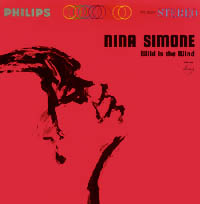
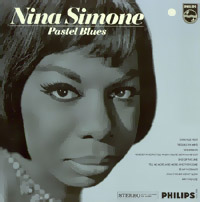
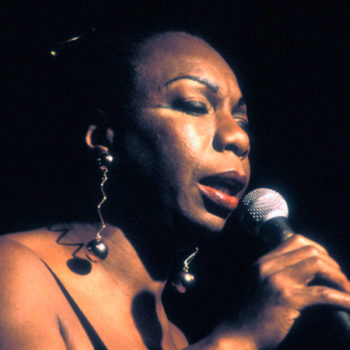
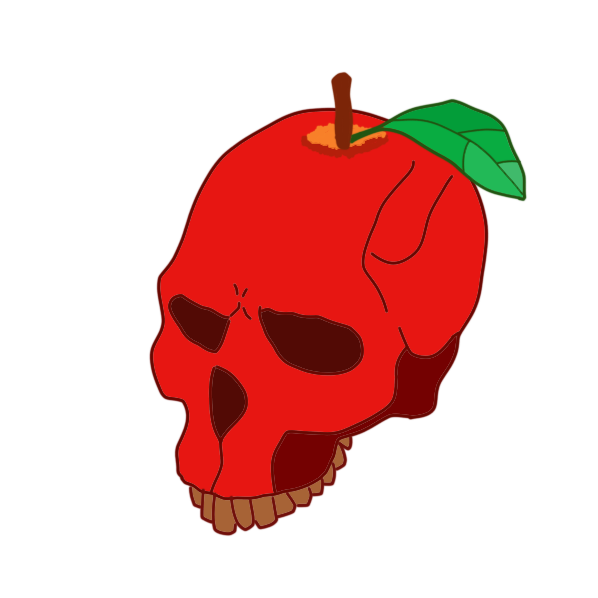
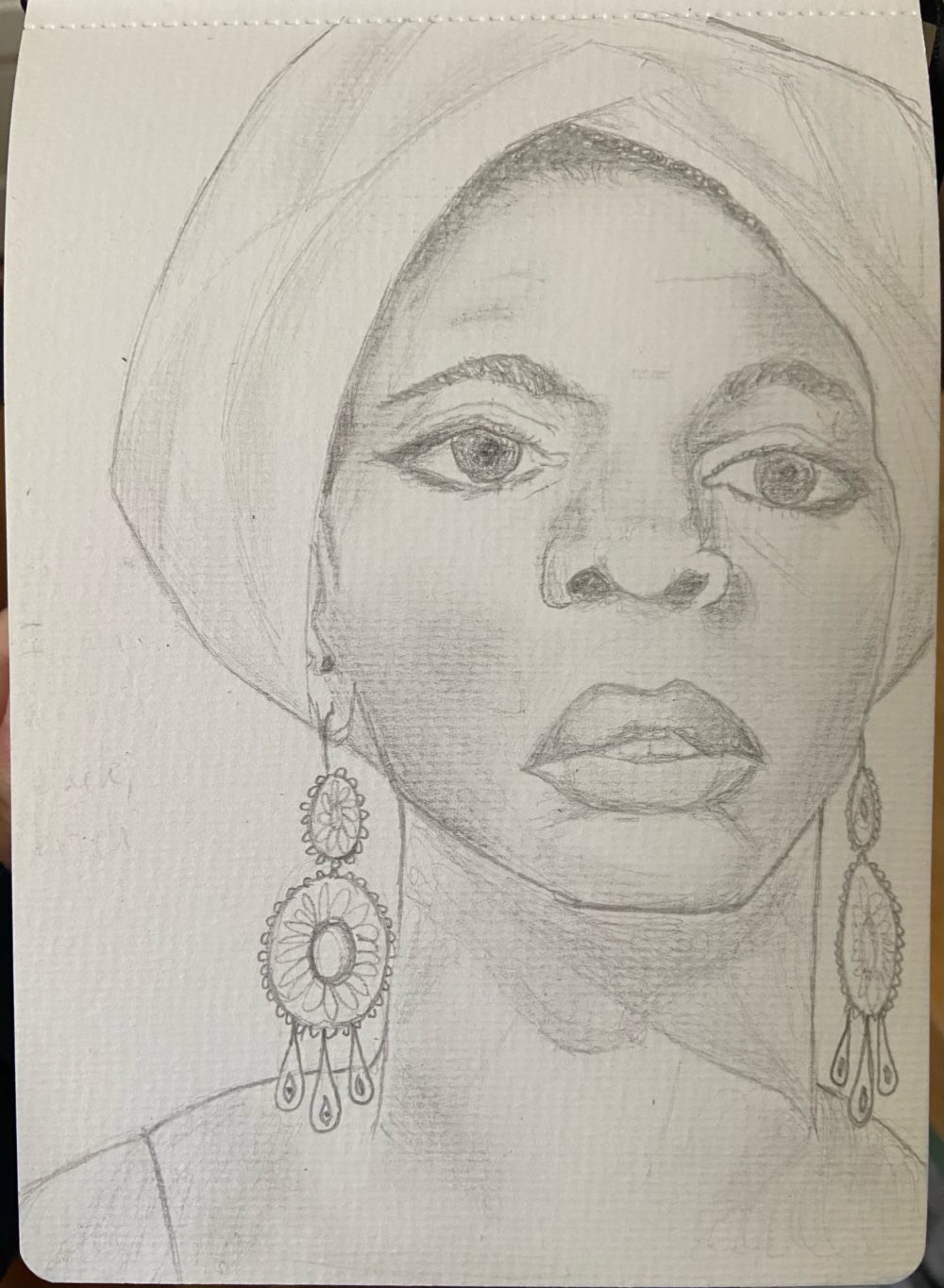


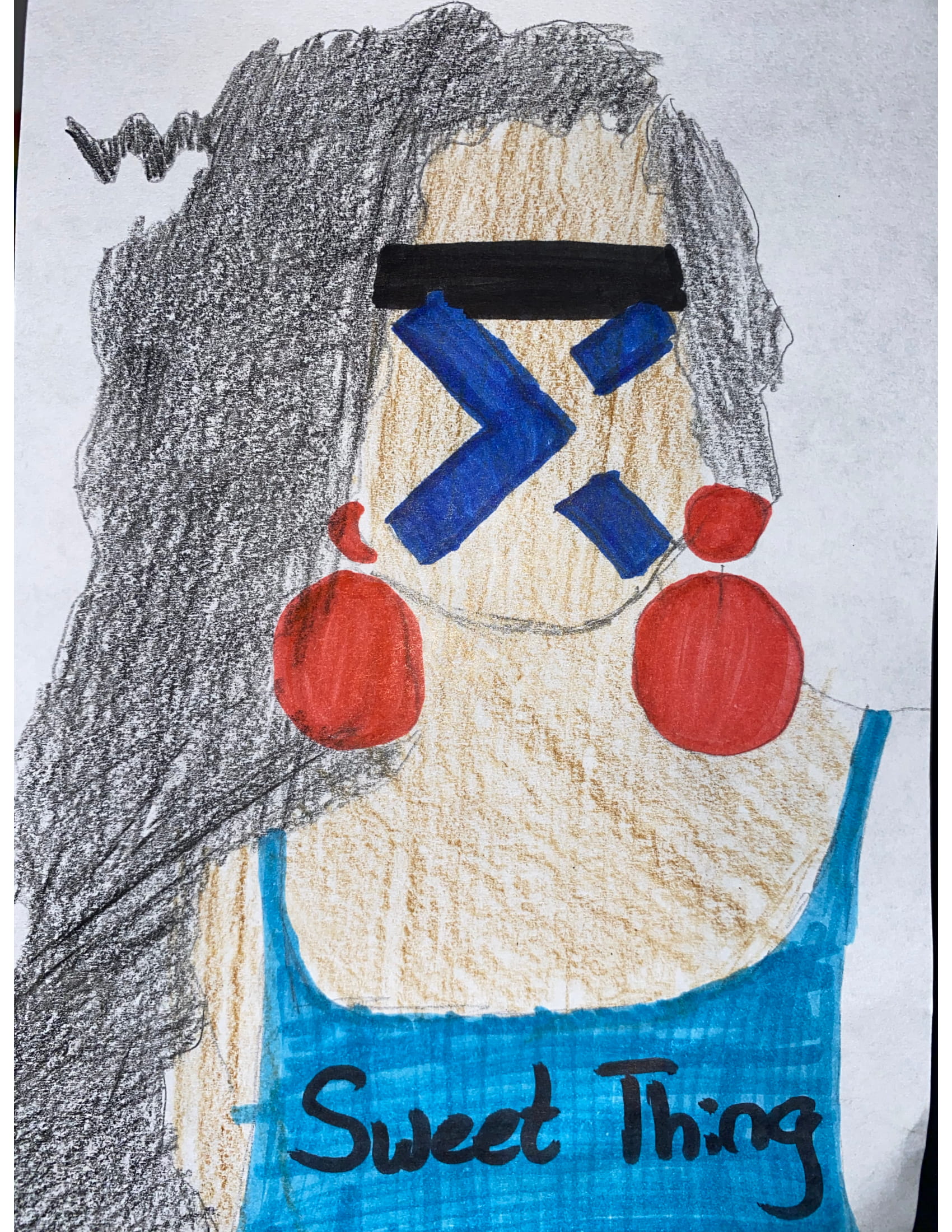
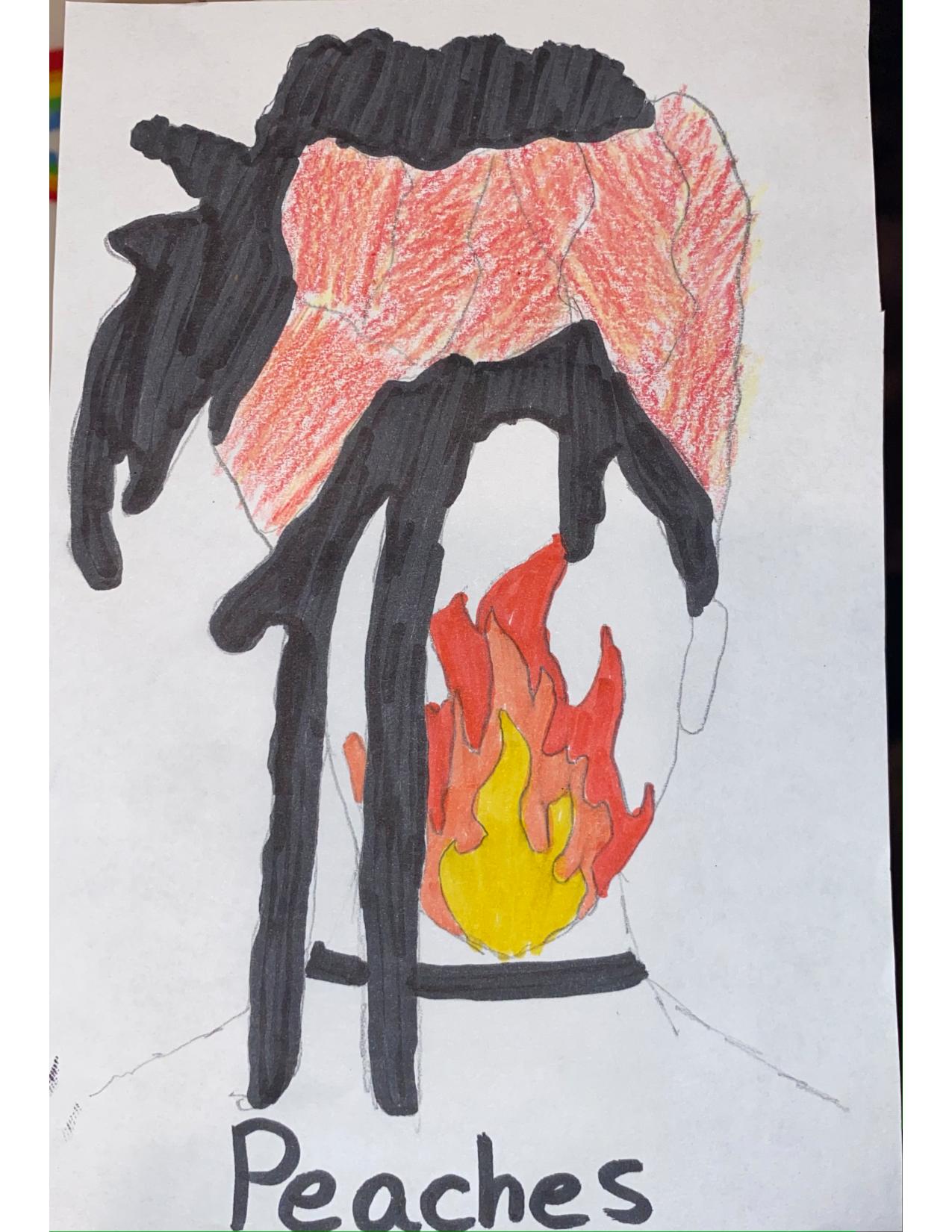
Really interesting and compelling artistic responses!
Wow, I really enjoyed these artistic responses to the work and life of Nina Simone. Thank you all! Her voice, her talent and her bravery continue to influence artists of all types.